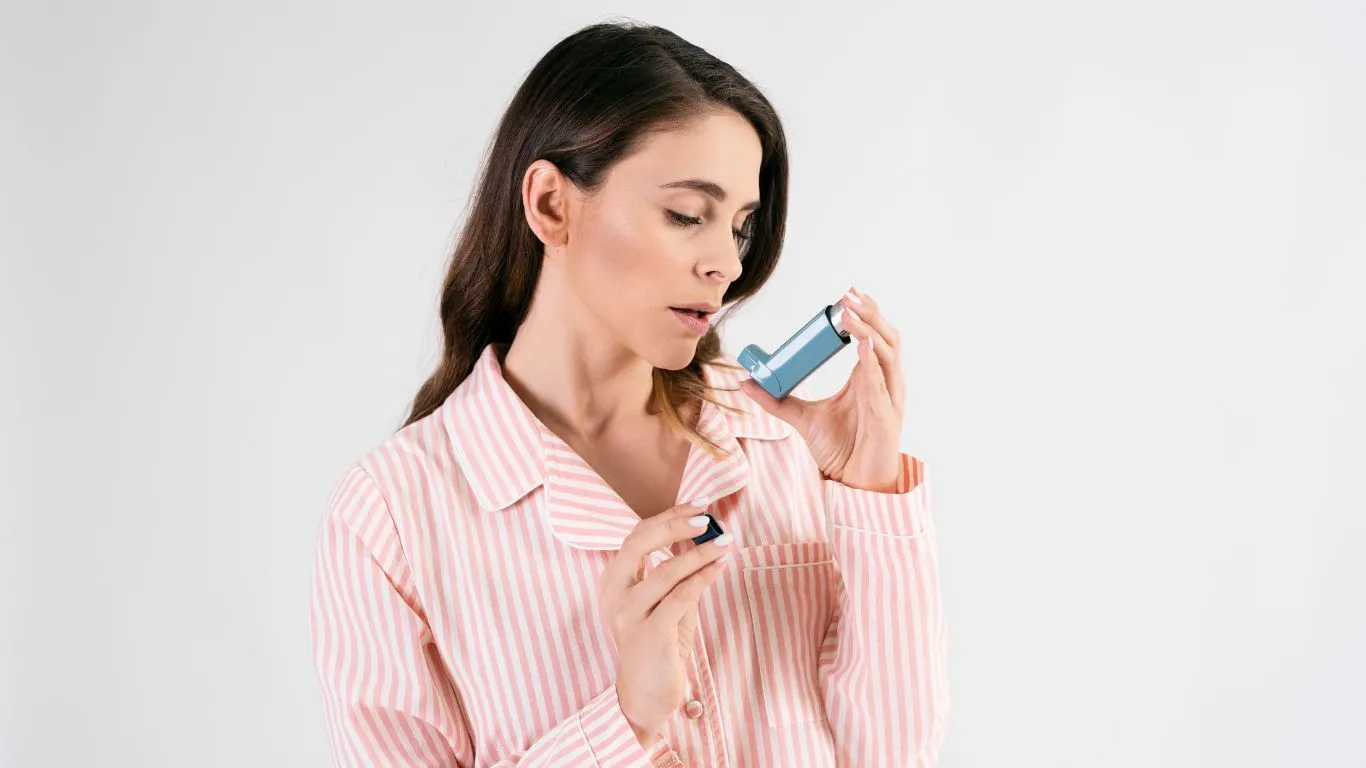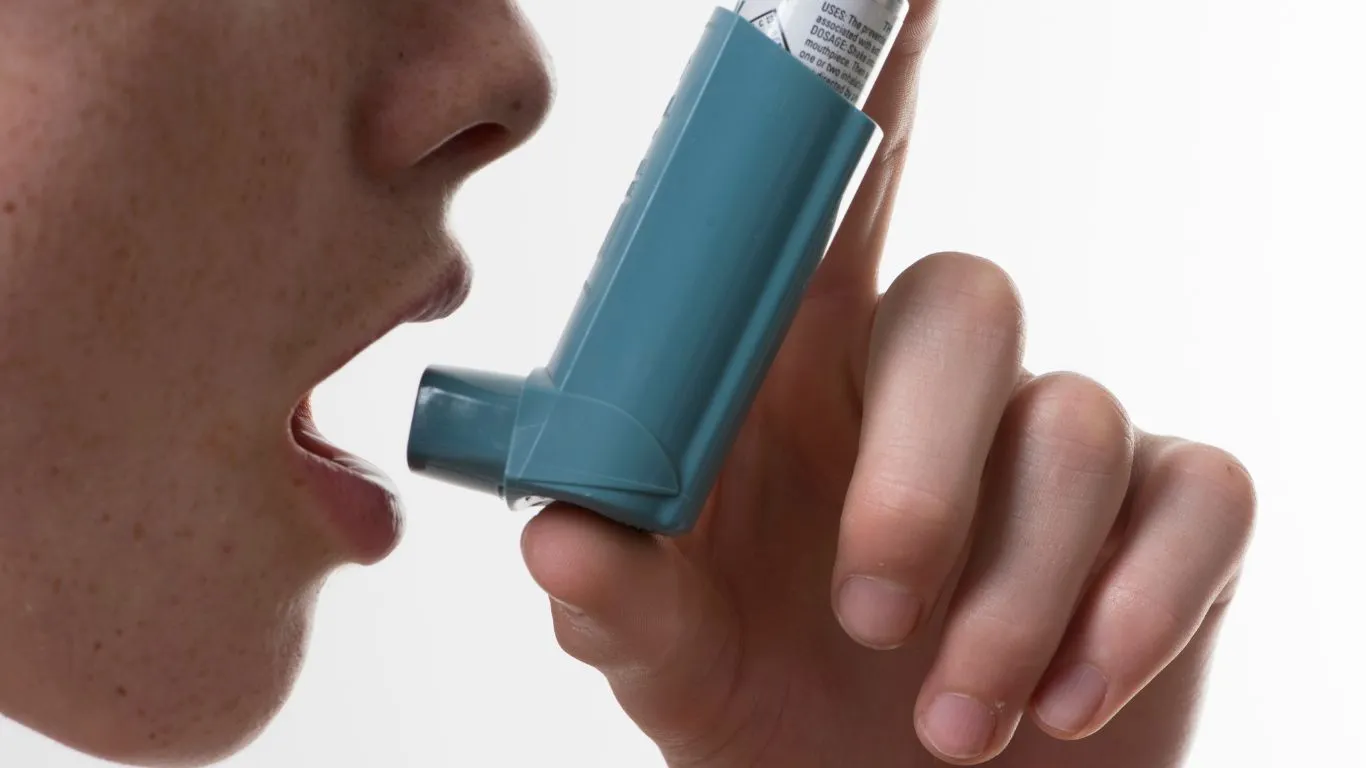Asthma and Dehydration: A Hidden Danger You Shouldn’t Ignore
Let’s talk about something that doesn’t get nearly enough attention: the asthma and dehydration connection. As a Pulmonary Nurse, I’ve seen countless patients come into the ER wheezing, gasping, and completely confused as to why their asthma flare-ups seem to come out of nowhere. What’s wild is, a lot of these same patients are also showing clear signs of dehydration—dry mucous membranes, low blood pressure, elevated heart rate. And it got me thinking, why aren’t we talking more about how staying hydrated affects our lungs, especially for folks living with asthma?
The Overlooked Link Between Asthma and Dehydration

How Dehydration Sneaks Up on People with Asthma
You’d be surprised how easy it is to become mildly dehydrated without realizing it. And when you’re already dealing with a chronic condition like asthma, the effects hit harder. The airways are already inflamed and sensitive. When you’re low on fluids, your body starts pulling moisture from wherever it can—including the lining of your airways. That spells trouble.
From what I’ve seen clinically, patients often report thicker mucus during a flare-up. That’s not a coincidence. Dehydration makes mucus stickier and harder to clear out. When your bronchi are already constricted and inflamed, the last thing you want is gunk clogging up the airways. It’s like trying to breathe through a straw filled with peanut butter.
Why Your Lungs Need Water (Not Just Air)
Your lungs are about 83% water. Yep, you read that right. They’re not just bags of air; they’re dynamic, fluid-dependent organs. Every breath you take involves an exchange of gases across a moist surface. When you’re even slightly dehydrated, those surfaces can dry out, lose elasticity, and become more prone to inflammation.
And let me tell you from experience, patients who keep their hydration levels up tend to have fewer exacerbations. Not none—but definitely fewer. It’s not magic, it’s physiology. Hydration helps thin the mucus, supports proper lung function, and even aids in medication absorption—especially inhalers that rely on a moist environment to work effectively.
How I Discovered This Link in My Practice

Real Patients, Real Patterns
One afternoon, I had back-to-back asthma patients come in. It was a particularly hot day in July, and not one of them had been drinking enough water. They weren’t athletes, they weren’t outdoorsy folks—they were just average people who’d been running errands or stuck in stuffy offices all day. And yet, the trend was clear: dehydration was exacerbating their asthma symptoms.
From then on, I started making hydration a part of my standard asthma education. I’d ask patients how much water they were drinking, if they were relying too much on caffeine or sugary drinks, and how often they were urinating. You’d be amazed how many people realize they’re drinking half of what they should be.
How I Explain It to My Patients
I like to keep things simple when I’m talking to patients, so here’s how I explain it:
- Think of your airways like a slip-n-slide. When it’s well-watered, you slide smoothly. When it’s dry, it’s just a painful tumble.
- Water is your lung’s natural lubricant. It helps keep airways flexible and mucus flowing.
- Every cell in your lungs needs hydration to perform its job, including the immune cells that help fight off infection and allergens.
And it works. I’ve had patients come back and tell me that upping their water intake made them feel less tight in the chest, especially during pollen-heavy seasons or when they were stressed. Is it a cure? Of course not. But it’s a low-cost, high-impact tool in the asthma toolkit that we shouldn’t ignore.
The Subtle Signs You’re Dehydrated (and Don’t Know It)

Not Just Thirst—Look for These Clues
Thirst is actually a late sign of dehydration. By the time you feel thirsty, your body is already playing catch-up. Instead, keep an eye out for these sneaky symptoms that could be signaling low hydration, especially if you have asthma:
- Dry, sticky mouth
- Fatigue and irritability
- Dark yellow urine
- Dizziness or lightheadedness
- Thicker mucus or difficulty coughing up phlegm
If you’re experiencing two or more of these, it might be time to grab a glass of water before you reach for your rescue inhaler.
How Medications Can Dehydrate You Without Realizing It

Let’s Talk About the Drying Effects of Asthma Meds
Here’s something I wish more patients were told upfront: some asthma medications can actually contribute to dehydration. Yep. I know that sounds a little backward—taking meds to help you breathe better, but they might be drying you out at the same time. Happens more often than you’d think.
Inhalers like albuterol and corticosteroids (whether inhaled or oral) can have subtle diuretic effects or lead to dry mouth and throat. That dryness isn’t just uncomfortable—it can affect how well your meds work and how your airways respond to irritants. I’ve seen patients complain that their rescue inhaler “isn’t working like it used to,” and half the time, it’s because their airways are bone dry and inflamed from dehydration.
Whenever I start a patient on a new asthma medication—especially steroids—I always go over hydration habits. Here’s what I usually recommend, based on what’s worked best in real life:
- Increase water intake slightly—not a drastic amount, just enough to compensate for added dryness.
- Use a spacer with inhalers to reduce medicine hitting the throat directly (which contributes to dryness).
- Rinse the mouth after inhaler use—this helps prevent both dryness and oral thrush.
- Use a humidifier, especially at night. Bonus: it helps reduce nighttime coughing spells.
I’ve had one patient actually start carrying a reusable water bottle everywhere—not for fitness, but because she finally realized her mouth was constantly dry after taking her morning puff. Small adjustments like that really do make a difference.
The Seasonal Impact: Heat, Cold, and Indoor Air

Summer Isn’t the Only Culprit
Most people associate dehydration with summer heat, but let me tell you—winter is just as bad, if not worse. Cold, dry air paired with forced indoor heating? It’s a recipe for dried-out lungs and unexpected asthma flares. During the winter months, I’ve had patients show up with red, cracked lips and tight chests, swearing they’ve been using their maintenance inhalers religiously. Turns out, they’re just breathing in desert-dry air all day and drinking coffee instead of water.
In summer, the challenge is usually sweating more than you think, especially for kids and older adults. I’ve had parents tell me their asthmatic kids were fine in the morning, but by late afternoon, they’re wheezing and fatigued. Nine times out of ten, the child was sweating it out on the playground and didn’t drink enough water to compensate.
Environmental Triggers and Hydration Synergy
It’s not just the temperature, either. Allergens and pollutants stick around longer in dry environments, which makes hydration even more crucial. Hydrated airways are more resilient. They don’t spasm as easily, and they trap and expel particles more efficiently. Dehydrated airways? They’re like a parched sponge—fragile and reactive.
Hydration Habits I Personally Recommend (and Use)

Simple Routines That Actually Stick
Let’s be real for a second. Telling someone “drink more water” is vague and not that helpful. So here’s what I do, both personally and with my patients, to make hydration feel doable and natural—not like another chore.
- Start your day with water, not coffee. Before you caffeinate, rehydrate. I drink 8 oz before I even touch my French press.
- Infuse your water with fruit, mint, or cucumber if plain water bores you. A little flavor makes it way easier to sip on all day.
- Track with a fun bottle that has time markers or even motivational quotes. I bought one as a joke once, and now I swear by it.
- Set phone reminders if you’re forgetful—especially helpful for patients with packed schedules or ADHD.
- Eat your water. Foods like watermelon, oranges, cucumbers, and soups add to your hydration total.
These little shifts can really add up. I had one older gentleman tell me he hadn’t had an asthma flare in months after he started hydrating intentionally. He didn’t change his meds, his routine, or his diet—just his water intake. That’s powerful.
When to Reassess Your Hydration Strategy
Every patient is different, so hydration needs will vary. But I usually recommend reassessing if:
- You’re using your rescue inhaler more than twice a week
- You wake up feeling parched or with a sore throat
- Your mucus becomes thick, sticky, or discolored
- You’re fatigued more often than usual despite proper asthma control
In any of those cases, I urge people to take a closer look at hydration first before jumping straight into medication changes. Often, there’s a connection right there—hidden in plain sight.
When Hydration Isn’t Enough: Knowing When to Act

Hydration Helps—But It’s Not a Magic Cure
Alright, so let’s get one thing straight: hydration is not a replacement for proper asthma management. It’s an enhancement, a supportive piece of the puzzle. Over the years, I’ve seen some patients go all in on natural remedies—water, herbs, humidifiers—and completely neglect their prescribed treatment. That’s not the goal here. Trust me, I’ve had to have some real, tough conversations in clinic rooms.
If your asthma is acting up consistently—even with proper hydration—please don’t wait. That tightness, wheezing, or persistent cough could mean your medication plan needs adjusting or that there’s an underlying trigger you haven’t identified yet. Hydration helps your lungs function better, but it can’t do the heavy lifting alone.
Red Flags That Mean It’s Time to See Your Doctor
These are the symptoms that I always flag for follow-up, no matter how well-hydrated the patient is:
- Shortness of breath that doesn’t improve after using a rescue inhaler
- Wheezing that worsens at night or disrupts sleep
- Chest tightness after mild activity
- Frequent coughing that produces thick, colored mucus
These aren’t just minor flares—they could be signs of poorly controlled asthma or even a secondary infection. And let’s be honest, it’s better to catch things early than to end up in the ER at 2 a.m. (I’ve seen it too many times.)
Hydration & Asthma in Kids and Older Adults

Kids Often Don’t Recognize Dehydration
I can’t tell you how many times a kiddo has come into the clinic wheezing, flushed, and fidgety—only for the parent to say, “But he drank a juice box this morning!” The truth is, children don’t always recognize thirst signals, especially if they’re active or distracted. And sugary drinks or milk don’t hydrate like water does.
I always recommend parents use visual cues: colorful water bottles, fun straws, or even sticker charts for water intake. Make hydration part of the routine—just like brushing teeth. Especially during allergy season, or when they’re fighting off a cold, their little lungs need all the fluid support they can get.
Older Adults Need Gentle Reminders Too
On the other end of the age spectrum, seniors are another group I watch closely. Many of them have reduced thirst perception or are on diuretics for blood pressure—both of which set them up for dehydration. Add asthma to the mix, and it’s a delicate balance.
Encouraging small, frequent sips throughout the day usually works better than pushing large glasses of water. And warm fluids—like herbal tea or broths—can be both soothing and hydrating, especially in cooler weather. I’ve even had one patient swear by a thermos of warm lemon water during winter walks. Hey, whatever works!
Integrating Hydration Into Your Asthma Routine
Your Daily Checklist
So how do you make this stick? Here’s a quick checklist I’ve helped patients build out over the years—something they can actually follow without feeling overwhelmed:
- Drink a full glass of water first thing in the morning.
- Keep a water bottle within reach throughout the day (car, desk, gym bag).
- Limit dehydrating drinks—coffee, soda, alcohol—especially during flare-ups.
- Use a humidifier during dry months or if indoor heating is running constantly.
- Check urine color: pale yellow = hydrated. Dark = time to drink up!
Even just hitting three out of five most days can make a noticeable difference in how your lungs feel and function.
What I’ve Learned Through the Years
After more than a decade working with asthma patients, hydration remains one of the most overlooked, under-discussed tools we have. It’s not complicated, it doesn’t cost a fortune, and it supports every part of the respiratory system. Whether you’re newly diagnosed or you’ve been managing asthma for years, I hope this gives you a fresh perspective and some easy wins.
And if nothing else—maybe this post makes you reach for a glass of water instead of another cup of coffee. Your lungs will thank you.
References
- National Institutes of Health (NIH)
- Health.com
- Centers for Disease Control and Prevention (CDC)
- Mayo Clinic
Disclaimer
This article is for informational purposes only and does not constitute medical advice. Always consult with a licensed healthcare provider before making any changes to your asthma treatment or hydration strategy. As a Pulmonary Nurse, I share personal insights and experiences that are meant to educate—not replace individualized medical care.

Bianca Nala is a compassionate Nurse Practitioner with a strong background in primary and respiratory care. As a health writer for Healthusias.com, she combines her clinical expertise with a talent for clear, relatable storytelling to help readers better understand their health. Bianca focuses on topics like asthma, COPD, chronic cough, and overall lung health, aiming to simplify complex medical topics without losing accuracy. Whether she’s treating patients or writing articles, Bianca is driven by a single goal: making quality healthcare knowledge accessible to everyone.






